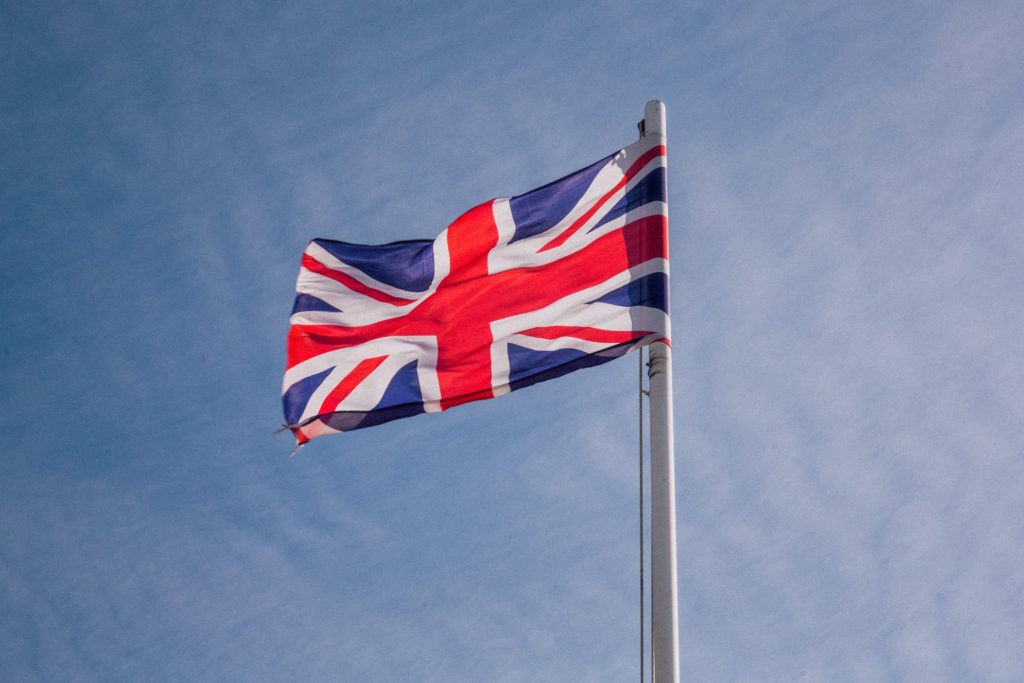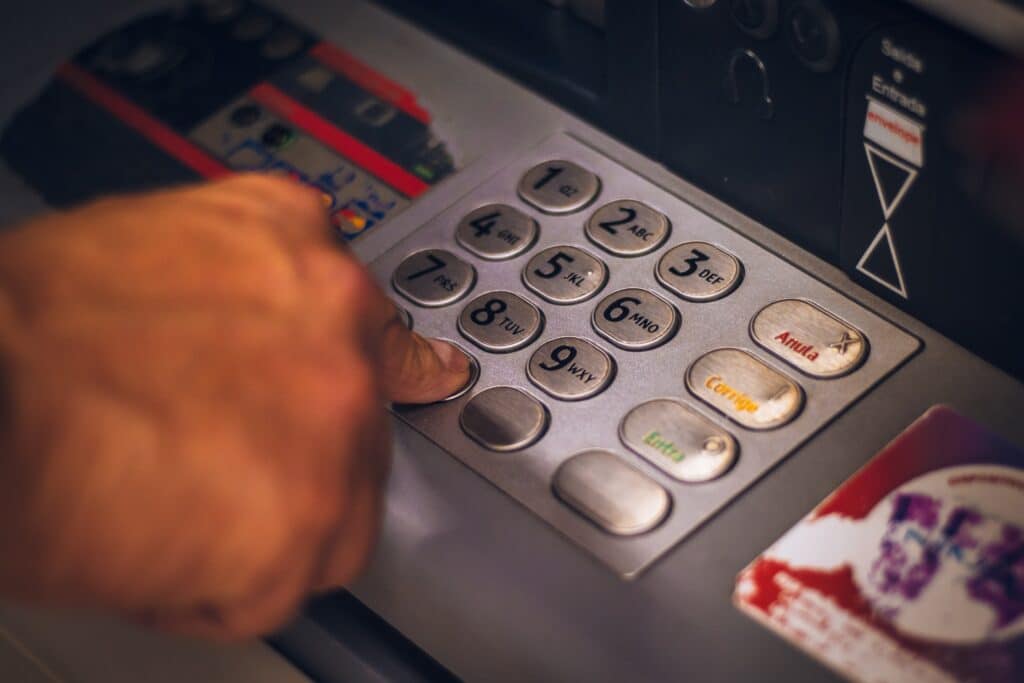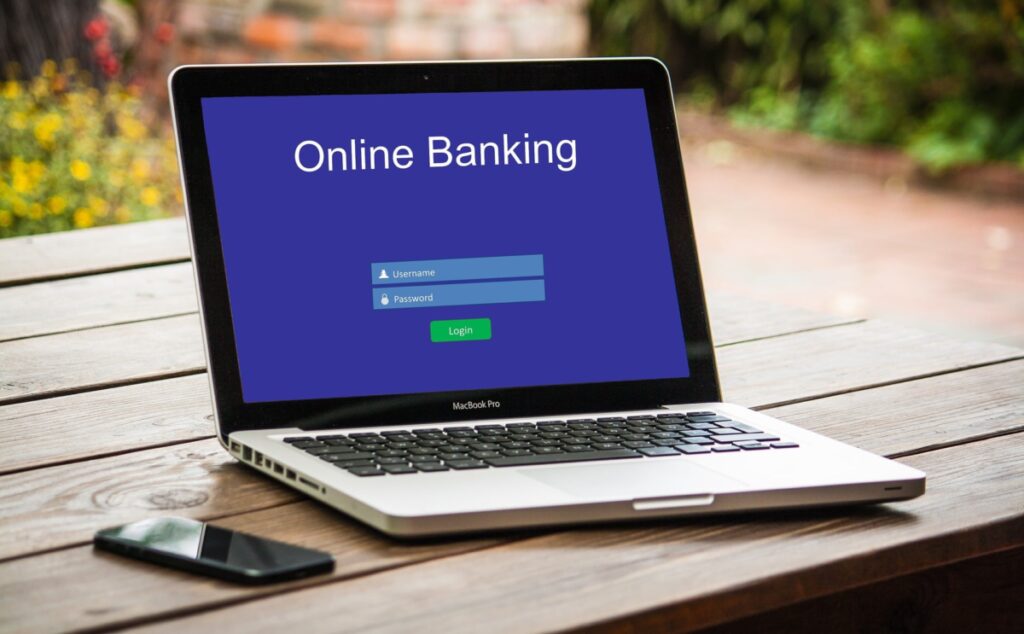Last updated on August 12th, 2023 at 06:14 am

Whether you’re preparing to move or study in the UK or have just arrived, opening a local bank account is probably on your list of things to do. It will help make it easier for you to settle into your new surroundings — in most cases, you’ll need a current account to set up your home internet or mobile phone contract.
While it was difficult in the past to open a bank account in the UK, it’s become much easier. At Remitly, we understand it can still feel overwhelming to start banking in a new country. So we’ve put together a guide that walks you through opening a UK account.
Documents Required to Open a Bank Account in the UK
While there aren’t many restrictions regarding your legal status in the UK when opening a bank account, you need to prove that you live legally in the country. The two types of documents you need to open a bank account are ones to confirm your identity and your address in the UK.
Proof of identity
To prove your identity, non-residents and residents alike must provide a current photo ID. Major UK banks may accept:
- A driving license
- An identity card if you’re an EU national
- A passport from your home country
- A biometric residence permit
UK banks will require the identification to be valid and unexpired. If you’re opening joint accounts, you’ll typically need to provide proof of identity for each person listed on the bank accounts.
Proof of address
In addition to proof of identity, you’ll typically need to show another document that counts as proof of address.
Each bank will have its own list of requirements for acceptable documents. However, in most cases, the following documents can count as proof of address:
- Statement for a current account with another bank in the UK — Normally, this will need to be from within the last three months and must be an original copy that was mailed to you or obtained at a bank branch rather than downloaded from the internet.
- Credit card statement, usually from within the last three months that is an original copy rather than a download
- Recent council tax bill
- Letter from your university confirming your UK address
- Recent mortgage statement
- Letter from Jobcentre Plus confirming your National Insurance number
- Letter from your employer
- Recent household utility bill (mobile phone bills usually don’t count)
You may be able to use a tenancy agreement, but many financial institutions won’t accept a letter from a private landlord as proof. However, you may be able to use a letter from a registered housing association or the local council.
If you’re new to the country or don’t have any access to documents, a bank may make exceptions to the proof of address rule. For example, they may accept proof of a non-UK address for non-resident bank accounts.
How to present the required documents when opening an account in the UK
How you’ll present the required documentation will depend on whether you are opening a UK bank account online or in person.
If you’re visiting a branch to open an account in the UK, you can bring the documents with you.
For UK banks that allow you to open a bank account online, you’ll typically be asked to upload an image of your proof of identity to the online banking services website. Many banks will also require you to snap a photograph of yourself so that they can verify your identity virtually.
If you have difficulty uploading your proof of address and/or identity confirmation, the bank may allow you to complete the bank account application and then visit a branch to present the documentation at a future date. In this case, UK banks may allow you to deposit into the account but hold money and prohibit you from withdrawing funds or making money transfers until you complete the verification.
Keep in mind that the specific documents that major UK banks will accept vary. Before opening an account in the UK, call ahead to see which forms are acceptable. Having all of the necessary documentation available will help you get your bank account open more quickly.

Choosing the right UK bank for your needs
Finding the right bank will depend on what your needs are. In most cases, larger banks offer in-person, online, and mobile banking access.
The four biggest banks in the U.K. are sometimes called the “high street banks.” They include:
Other major UK banks include Santander, TSB, and the Royal Bank of Scotland (RBS).
These banks are regulated by the Financial Conduct Authority in the United Kingdom, which means they’re quite safe. As the UK government describes on its main site, the role of the FCA is: “protecting consumers, keeping the industry stable, and promoting healthy competition between financial service providers.”
Learn more about some of the best banks in the UK for non-residents by checking out our handy guide.
How to choose a UK bank
When deciding where to open an account in the UK, consider the following.
How you bank
How you prefer to do your banking can help determine which UK banks are right for you.
If you access banking services primarily on your computer or mobile phone, you’ll want to choose a UK bank with an easy-to-use, reliable platform. You may even want to select one of the UK’s online banks with no physical branches.
People who prefer to handle banking transactions face-to-face may be more concerned about how many branches the bank has and if they are located near where they live and work.
ATMs may also be important if you frequently make deposits or withdrawals using your debit or ATM card. Many banks assess fees when you use ATMs outside your network, making it important to find out how many ATMs the bank has and where the closest ones are.
Customer service
Most UK banks offer the same types of bank accounts, such as checking, savings, and investment accounts. Part of what separates financial institutions from one another is their reputation.
Major banks in the UK will be capable of keeping your money safe, but the level of customer service they provide may vary. Before choosing a UK bank, read online reviews to see what real customers say about the financial institution.
Also, consider how the bank will assist you if you need help with your account. Online and traditional banks typically have a phone number to call for support, and many major UK banks also provide customer service assistance through live chats.
Double-check the customer service hours of operation before choosing a UK bank. Ensure there will be someone there when you’re most likely to require assistance. For example, if you work the night shift and sleep during the day, a customer service team that is only in the office in the morning and afternoon may not be helpful for you.
Competitiveness
Another major consideration when choosing a UK bank is how competitive it is in terms of:
- Monthly fees: Banks charge monthly fees for many bank accounts. Consider what the fees are and if they can be waived if you maintain a minimum balance or meet another requirement, such as having the option of direct deposit.
- Interest rates: Getting a reasonable interest rate is a top priority for savings and investment accounts. Online banks sometimes offer more favorable rates because they have fewer expenses than UK banks with brick-and-mortar locations.
- Additional fees: Compare fees for using ATMs, overdrafts, and other banking services before you open an account.
How to choose a UK bank account
Once you know which UK bank you’d prefer to do business with, the next step is to decide which specific bank account you’d like to open. Read on to learn more about selecting the best UK bank account for your needs.

Types of UK bank accounts
UK banks offer a variety of bank accounts. Some of the most common types of bank accounts include all of the following.
Basic accounts
A basic account is for everyday banking. Typically, it includes a debit card only with no checkbook and has low or no monthly fees.
Current accounts
A current account is a step up from a basic account. Sometimes called a traditional bank account, it often includes a debit card and a checkbook and has low or no monthly fees.
Packaged accounts
A packaged account is a type of bank account that offers everything you get with current accounts plus additional perks that vary from bank to bank. These premium accounts may include things like roadside assistance or fee-free ATM usage. Typically, these bank accounts carry a monthly fee.
Multi-currency accounts
A multi-currency account allows you to make transactions in more than one type of currency. For example, a multi-currency account may be a euro bank account and a GBP bank account at the same time.
Sometimes called international accounts, these bank accounts typically have lower currency exchange fees and can be a good option for new arrivals who frequently make international transfers. In some cases, you may even be able to make free international money transfers with a multi-currency account.
Student accounts
A student account often includes additional perks for international students studying abroad in the UK. For example, some UK banks offer overdraft protection to spare students just learning how to budget from costly fees.
Student accounts typically have low or no fees, and you’ll need to provide proof of your student status, such as a letter from the registrar or a student ID, to open them.
Business accounts
A business bank account is for a business rather than an individual. Many publicly owned lending institutions and private UK banks offer some type of business account.
If you’re an immigrant entrepreneur who needs a business bank account, you’ll typically need to provide additional documentation at the time of account opening. The bank may ask for:
- Proof of address for the business
- Proof of address and identity for anyone who owns more than a certain percentage of the business, such as 10% or 15%
- A business plan that verifies why you need a UK bank account
Like personal accounts, business accounts often carry fees. Depending on the account, you may gain access to a debit card and/or a checkbook.
Savings accounts
Savings accounts aren’t intended for making purchases. Instead, they’re for putting money away to cover emergencies and major purchases.
With savings accounts, you can usually make check or cash deposits. If you have a checking account at the same bank, you can also transfer money to and from your savings online and by stopping into a branch.
You’ll typically earn interest on the money in savings accounts. Some banks tie the amount of interest to the average balance, paying more when you maintain a higher balance. Many UK banks charge a monthly fee on all savings accounts, or they may assess a fee if the balance in your savings account falls below a certain level.
What to consider when selecting a bank account
When choosing a bank account, consider the following.
Costs
What will it cost you to have the account?
Is there a monthly fee? What are the additional fees like currency exchange fees and ATM transaction fees?
Accessibility
How can you access funds in your account? Can you make cash deposits and withdrawals?
Is there an online banking site? A mobile app?
Do you get a checkbook? A debit and/or ATM card? Do you need both?
Interest
Do you earn any interest on the bank account? If so, is the rate fixed, meaning it stays the same over time, or variable, meaning it’s subject to change?
Perks
Do you get any additional perks or benefits for holding the account? If so, are the specific benefits actually useful to you?
How to open a bank account in UK
Each bank’s process to open a bank account may vary, so it’s a good idea to check beforehand to see what you must do.
You can expect to follow these steps when opening an account with most banks in the U.K.:
1. Complete an application form
The first step when opening a UK bank account is to complete the application. At traditional banks, you may do so in person by answering questions presented by a banking representative. Online banks will usually have you enter the information yourself.
Typically, you’ll need to provide your name, date of birth, home country, marital status, and contact information like your phone number and current UK address. You may also need to provide all of your home addresses for the last three years when you open a bank account in the UK.
2. Provide identification and proof of address
During the UK bank account opening process, you’ll need to show the documentation the financial institution requires. Remember to find out what you need to present ahead of time so you’re prepared.
3. Select your PIN
If your bank account includes a bank or debit card, you’ll select a personal identification number or PIN when you open the account. Choose something that people are unlikely to guess, but that is easy to remember. Protect your PIN for safety, and don’t share it with others.
After setting your PIN in person, you will typically receive your bank card in the mail within a few working days. Some banks, such as Barclays, offer a temporary debit card in the interim.
4. Make an initial deposit
The final step to open a bank account in the UK is to make an initial or opening deposit. The bank will likely require you to deposit a minimum amount of money in the form of cash or a check.
If you open a bank account online, you may be able to transfer money from an existing account while you complete the process. In other cases, you may need to stop into a branch to make a deposit.
Start researching your options

Now that you know how opening a bank account in the UK works, you’re ready to start researching your options. Follow the above tips to compare institutions that offer UK bank accounts and select the best bank and UK account for your needs.
Learn More
Our guide to exchange rates will help you send and receive different currencies more affordably. Looking to get your visa? Check out this guide.
Lastly, to locate SWIFT codes for major banks, go here. (Note that in the UK, sort codes are used to identify banks within England and Ireland for making domestic transfers.)
Remitly makes international money transfers faster, easier, more transparent, and more affordable. Since 2011, over 5 million people have used our secure mobile app to send money with peace of mind. Visit the homepage, download our app, or check out our Help Center to get started.

